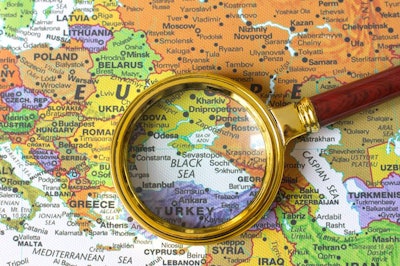
Conflict in Black Sea region causes volatility and trade difficulties for Russia and Ukraine, which are major producers of grains and oilseeds, fertilizer and energy
Russia’s invasion of Ukraine has caused volatility in many sectors of the global economy, including grains, fertilizer and energy. Experts from Rabobank addressed issues concerning those sectors in a press call on March 1.
The fighting in the Black Sea region has caused uncertainty and higher prices, as Russia and Ukraine are major global producers of several grains and oilseeds.
According to Stephen Nicholson, global grain and oilseed strategist at Rabobank, Ukraine and Russia export approximately 29% of the world’s wheat exports per week.
“So, a significant amount of wheat comes out of there. For reference, the U.S. last year was 13.3% of the world’s exports a week,” he said.
Nicholson said the grains and oilseeds markets were already in a rally and moving higher before the invasion, “and just really kind of adds fuel to the fire.”
In addition to wheat, Russia and Ukraine account for 90% of the world’s corn exports, 78% of sunflower oil, 31% of barley and 23% of canola.
Nicholson said the challenge now is to fill in the gaps in supply left by Ukraine and Russia, especially considering that those two countries don’t carry many stock of wheat.
“So if you take your Russia and Ukraine wheat out and you think, OK, then that means there’s a lot left, but you look at the other exporters in the world and look at those stocks, there’s not enough stocks there to make up that loss of exports,” he said. “And so that’s a real, real concern and why the wheat market was so quick to react because there’s just not stocks in the exportable countries to make up that difference and make up that loss of Russia and Ukraine exports.”
Major grain traders and processors, including Bunge and ADM, have suspended operations in Ukraine, and Ukraine’s military had closed commercial shipping ports, while Russia ordered the Azov Sea closed to commercial vessels. Cargill reported that a vessel it chartered was hit by a projectile in the Black Sea on February 24.
This all means companies operating in the region must consider several risks, including putting their supply chains in danger, higher insurance and freight costs, and availability of commodities.
Another concern in the coming months, Nicholson said, will be crop production in Ukraine and Russia and farmers’ ability to secure financing for input costs.
“And I have to say too, I just think about farmland as battlefields and some of that ground, it just won’t be available,” he said. “It’s a challenge planting a crop any place in the world, let alone in the middle of the conflict.”
Fertilizer and energy concerns
Samuel Taylor, farm inputs analyst at Rabobank, said there are two main areas of concern stemming from the conflict that affect the global fertilizer market: production and export that comes from the region, and the flow of natural gas from Russia to other regions for their production of fertilizers such as nitrogen. Ryan Fitzmaurice, energy commodity strategist at Rabobank, said Russia produces “significant” amounts of natural gas for domestic use and for export.
Taylor said Russia and Belarus each account for approximately 20% of the global exports of potash, and Russia accounts for 22% of global exports of ammonia, 14% of global exports of urea and 14% of global exports of a specific phosphate used in global production of soybeans.









